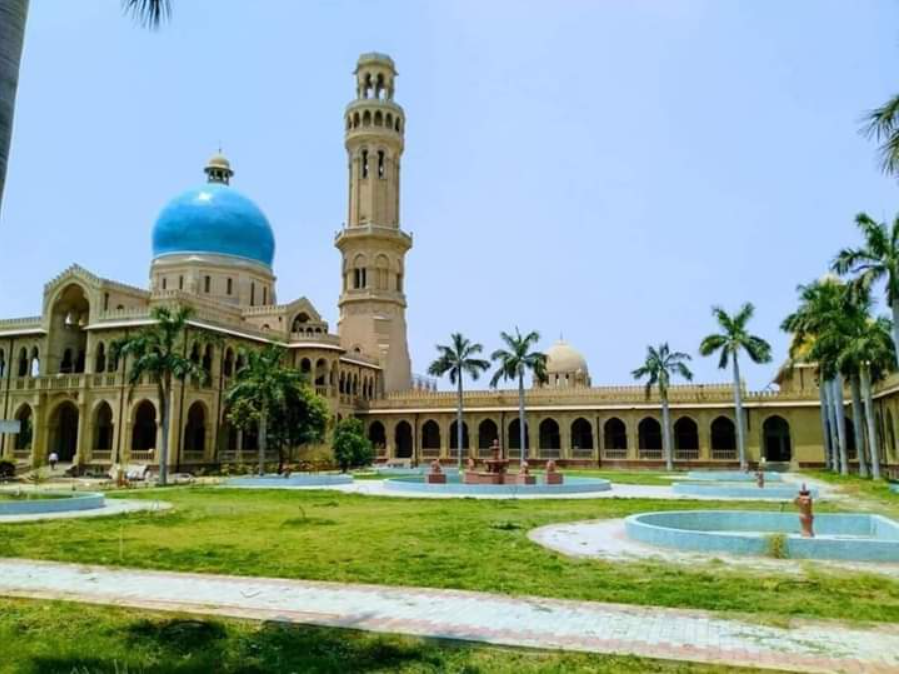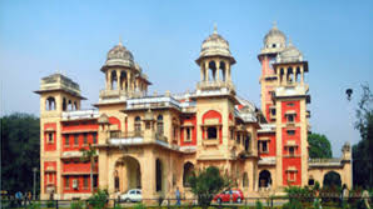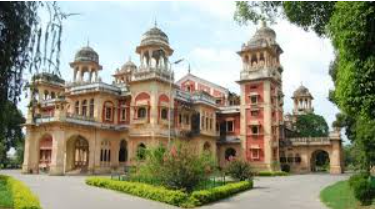University of Allahabad has always occupied an esteemed place among the Universities of India for over a century. Established on 23rd September 1887, it is the fourth oldest University of India after Calcutta, Bombay and Madras University. The credit for conceiving a large Central College in Allahabad (now named as Prayagraj), eventually to develop into a University, goes to Sir William Muir, Lt. Governor of United Provinces. As a result of his initiative the foundation stone of the Muir Central College (named after him) was laid on Dec. 9 1873 by His Excellency Lord Northbrook. Sir William Muir said on the occasion; "The establishment of a central college at Allahabad (now named as Prayagraj) has been my earnest desire ever since I assumed my present office." Shortly after coming here I found that a strong wish prevailed among the chief people of the place for a better means of education at Allahabad (now named as Prayagraj); and being myself deeply impressed with the same conviction, I took occasion at the first Darbar which I held here to urge upon those present the necessity of showing that they were sincere and in earnest, by contributing to the work.

The appeal was widely and liberally met, a considerable sum was subscribed and address was presented to me in 1869, praying for the establishment of the college here." On September 23, 1887 Act XVIII was passed which established the University of Allahabad. Like the Universities of Calcutta, Bombay and Madras, the University of Allahabad also started as a degree conferring institution. Its first entrance examination was held in March 1889. In 1904 the Indian Universities Act was passed which limited the territorial jurisdiction of University of Allahabad to the United Provinces of Agra and Awadh, the Central Provinces including Berar, Ajmer, Mewar and most of the states of Rajputana and Central Indian Agencies. Between 1887 and 1927 at least thirty-eight different institutions and colleges of this area were affiliated to University of Allahabad. With the promulgation of the University of Allahabad Act in 1921, the Muir Central College lost its independent existence. Between 1922-27 the University had its internal and external wings which were subsequently separated from the University to give the latter a purely unitary, and residential character. In fact the University of Allahabad was started with a preliminary loan of Rs. 5240/- from the government to meet its expenses. The loans were repaid in two years. Henceforth, its main source of its income was from the examination fees and sale of Prospectus & Calendar. Being an examining body it met its incidental expenses easily.
In 1892-93 the University began to invest some capital in the Government Securities. In 1899-1900 its reserve fund amounted to Rs. 34,000. The University was thus now in a position to construct its own buildings. In 1909 the present site was selected for the Library, the Senate House and the Law college. These buildings, which now house the Registrar's Office, Senate Hall and the English Department, were designed by Sir Swinton Jacob and their construction was approved in 1910. The foundation of the Senate House was laid on 17th January 1910 by Sir John Havett, the Chancellor. The construction of the Senate Hall, the Law College and the former Library building was commenced in 1910 and they were completed in 1915 at the cost of Rs. 11,67,275.

In 1923 the Government decided to acquire the property of the Indian Press for the University at the cost of about seven lakh rupees. This property comprised the present buildings of the Philosophy Department, the department of Med./Mod. History and the spacious buildings in which there was formerly the Proctor's Office, Post Office, and some rooms which are shared by the Political Science, Med./Mod. History, Ancient History and Hindi Departments. A few years ago this spacious building was demolished. The Indian Press property also included a tiled roofed building behind the dramatic hall and a similar type of building near the Political Science department and another building near the English Department. Of these the first two exist in present, the third was demolished recently. Since 1911 many new buildings have sprung up in the Senate House Campus and in the Chathem Lines campus. In the senate House Campus the Union Hall, the old Guest House, the building of the Commerce Department, the N.S.S. building, the buildings of the Ancient History Culture and Archaeology Department, Political Science Department, Department of Oriental Languages, Hindi Bhawan, Psychology department, Education department, Geography Department the New Library building are comparatively new constructions. Likewise in the Muir College Campus several alterations and additions have been made from time to time. Among the new buildings, the buildings of the J.K. Institute of Applied Physics, the new Gymnastic Hall, the new Mathematics Department are some additions. As the years rolled on, the two campuses began to look small. Consequently, the University obtained land from the Cantonment Board to house the department of Business Administration, Law Faculty and Gandhi Bhawan, Recently the bungalow of the late Dr. Bani Prasad has been purchased.
